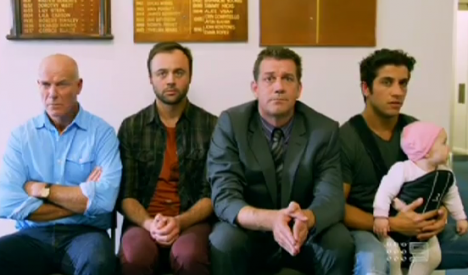TV drama marginalising minorities, with Indigenous community the ‘notable exception’, says Screen Australia study
Indigenous representation in Australian TV drama is out-stripping their percentage of the population but non-Europeans are still being significantly marginalised, results of a survey by Screen Australia have revealed.
People with disabilities, the LGBTQI community and those of European background are also under-represented as Australian drama remains dominated by Anglo-Celtic characters.
The diversity study, Seeing Ourselves: Reflections on Diversity in TV drama’ – lauded by Screen Australia as the largest of its kind since television arrived in Australia in 1956 – analysed all 199 dramas that aired between 2011 and 2015.
It found that while making up only 67% of the Australian population, 82% of fictional drama characters were Anglo-Celtic.


Can’t wait for the next TV drama about the Uzbekistan orphan girl who falls in love with the Butanese ditch digger who’s married to the Congolese shopkeeper who’s got the hots for the Guadalupian pastry chef who, of course, just happens to be a closet gay. Does that tip enough inclusiveness boxes for you? Jeez…give us a break.
So? This matches the ethnic ancestry of the Australian population. The role of TV drama is not social engineering, it is entertainment. When it’s the former, it’s on the ABC or SBS, and the viewing audience can be counted on the fingers of both hands. When it’s the latter, it’s entertainment and achieves respectable audiences.
Yes some directors and casting agents could be a little more adventurous in casting, but when it becomes an ethnic box-ticking exercise, it’s tiresome. In advertising the current favourite minorities-workaround is the redhead. The ranga is a ‘minority’, so casting one ticks a box, which is why every second kid you see on TV is a ranga. See how farcical it becomes, so quickly?
The 11% figure for LGBTQI seems high to me and inconsistent with alternative data such as Roy Morgan http://www.roymorgan.com/findi.....1506020136
Not looking to stir anything, just looking to match this article with my own understanding and other data, overall an interesting piece